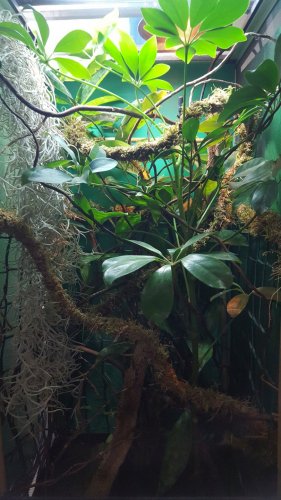jamest0o0
Chameleon Enthusiast
I've wanted to set up a Bioactive bottom for my larger cage that I am moving my male panther to. I have never done one before, but have read a lot about them. It seems like it would be a fun project and a nice addition to his enclosure. My plan is to find a sturdy bin with the dimensions of my cage and have the cage sit on top. Holes would be drilled in the bottom of the bin for drainage. I was thinking of either planting some larger umbrella and money trees in it or keeping the trees raised up on the sides of the cage with dragon ledges and have baby tears carpet the floor. Any thoughts on this? Anyone out there with experience have any links, suggestions, or any other input.





